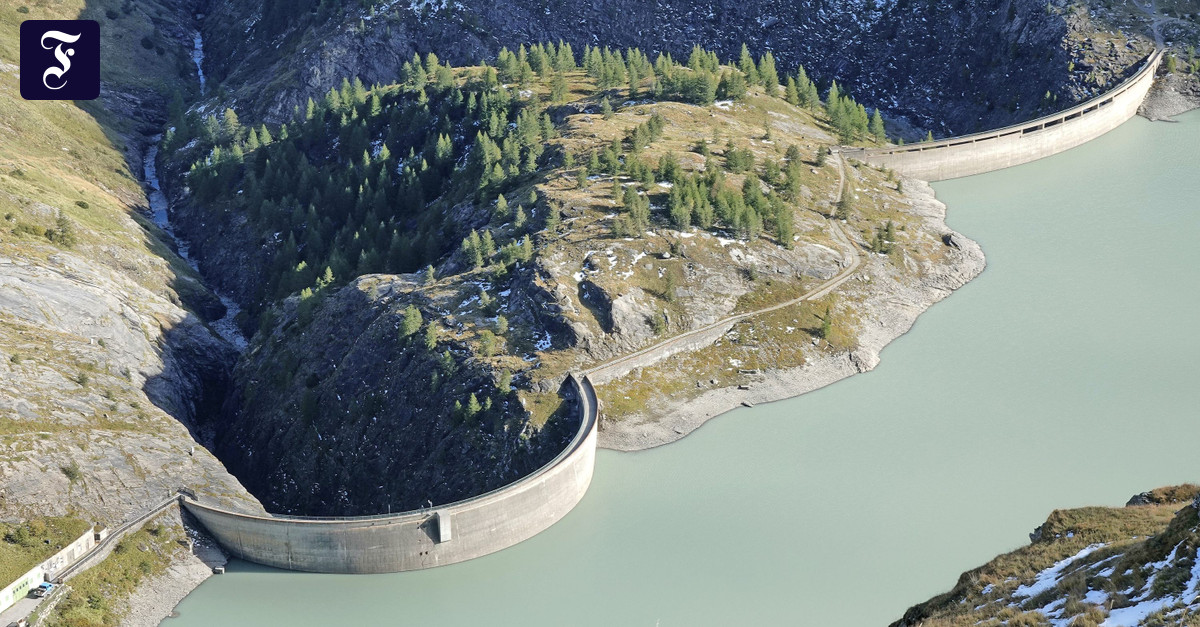Not only winter sports enthusiasts lack snow in Austria.
The little wintry weather doesn't bode well for the hydroelectric power stations either.
Because less snow also means less melt water.
The drought of the last summer was already a burden.
"This low water level is still ongoing," said Michael Strugl, CEO of the country's leading energy producer, Verbund, recently.
The listed company wants to position itself more broadly and generate more electricity from wind and sun.
Michael Seiser
Business correspondent for Austria and Hungary based in Vienna.
Follow I follow
Last summer was challenging for the entire European electricity industry, not only because of the high gas price, said Strugl.
In France, the nuclear power plants could not have been adequately cooled, the transport of coal, for example on the Rhine, was restricted, and the water storage power plants in Norway were not filled to the usual extent.
Verbund currently generates around 90 percent of its electricity from hydropower; in the future, 20 to 25 percent are to be generated by wind turbines and large photovoltaic systems (PV).
The severe drought hit Verbund economically, and diversifying the generation portfolio is extremely important, argues Strugl.
But despite the energy crisis, there is no national solidarity to invest in large wind and solar parks: "What we lack is the space", Strugl warned that security of supply cannot be obtained for free.
Projects would be blocked or delayed.
He believes that the very high electricity prices will only come down again when significant investments are made in renewable energies throughout Europe.
The wholesale futures markets are currently signaling that prices will still be high in 2024 and 2025, at around EUR 200 per megawatt hour.
The manager rules out the possibility that gas will one day be as cheap as it was before the Ukraine war.
More than half of the electricity from hydropower
More than 60 percent of the electricity produced in Austria comes from hydroelectric power plants.
Around a hundred large and thousands of small power plants ensure a stable basic supply.
After all, hydropower is the least volatile of all renewable energy sources and is largely unaffected by the weather or season.
Hydroelectric power plants, especially storage and pumped storage, are highly flexible.
You can compensate for the differences between the weather-related fluctuating generation of wind farms and solar systems and the respective electricity demand (residual load).
Together with wind power, biomass and solar power, around three quarters of the electricity in Austria is generated from renewable sources thanks to the early expansion of hydropower.
This puts the Alpine state as a pioneer far above the European average of one third.
Due to its natural conditions, the country has the best conditions for the use of hydropower.
In the Alps there is a lot of precipitation and very large differences in altitude.
Deep mountain valleys are also suitable for storing large amounts of water and for building storage power plants.
Not many economies in Europe have these conditions, with the exception of Norway and Sweden.
Austria has also used it, so that there is not much potential for further expansion.
Hydropower is a cheap form of electricity generation, says Franz Angerer, Managing Director of the Austrian Energy Agency - a research and consulting institution.
The structures of this energy source have a long service life, so many mill streams were created more than a hundred years ago.
Turbines and generators can withstand the stresses over many decades.
Electricity price still only in the midfield
Nevertheless, in a European comparison of market prices, Austria is only in the middle.
This has to do with the pricing mechanism.
Market prices are determined according to the merit order principle, according to which the last bid determines the price for all offers.
“In the past year, for example, we very often observed situations with significantly higher prices in Austria than in Germany.
Unfortunately, the high proportion of cheap water electricity has no influence on the electricity price for customers,” says Angerer.
As a result of the rise in energy prices, there has been an electricity price brake since December.
It is limited until mid-2024 and will be automatically applied to electricity bills during this period.
Although the Austrians rely so heavily on hydropower, they cannot cover their consumption with it.
In recent years, the country has been a net importer.
For 2030, the government has set itself the goal of covering all electricity needs from renewable energy sources over the year.
While the share of renewable energies in electricity production is already high in the warm season thanks to the high share of hydropower, things look worse in the cold season.
Production falls, but consumption rises because more electricity is needed for lighting and heat pumps.
This gap is filled by imports – electricity that comes mostly from coal or nuclear power plants.
In the winter months, the water supplies for the power plants are on average lower than in the summer.
However, it is difficult to identify clear patterns in the long-term statistics.
There are always very low water levels. According to the Energy Agency, the February months in 2006 and 2014 were conspicuous, but also late autumn 2018. If things continue as they did at the beginning of the year, this winter will also stand out.

